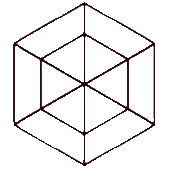2392 words
The spectrality of negativity: about hunting hauntings and ghostly discussions…
Discussion concerning psychopathologies of the digital is not necessarily straightforward. First of all, we need to be profoundly careful in order not to either glamorize the virtuality of the digital under new technological developments, turning into a certain futurist fetishism; but also, we must be careful not to fall into the trap of a weak moral relativism against such developments. And if philosophy can be helpful for anything it is to push towards a reorientation of the coordinates of a given impasse. So, the very own consideration of psychopathologies of the digital, should instantly compel us into considering what we accept to be pathological in the first instance. Moreover, this enables us to then move on to how the very own designation of psychopathologies itself can become a challenge between phenomenology and formalism. For example, to deal with matter, means that you are a materialist? Does matter define materialism? Or perhaps we can consider that: ”matter does not guarantee materialism” as Alenka Zupančič would say it... (2017, p.78) And here, we could quickly avoid a certain conservative empiricism from Anglo-Saxon heritage with its further aspirations of cataloguing reality as that which fits with their own eyes, but also, we could challenge this more simplistic empiricism inspired from a new digital topology and perhaps refresh coordinates of abstraction, such as those integrated by this exhibition (i.e. the hypercube, as a nice topologically inspired example...).
More than a response or a solution, psychopathology is in itself an impasse which evokes all the possible entanglements with monstrosity (as Patrick Tort and Georges Canguilhem, vastly debated). First of all, the basic presupposition of “normality” in terms of psyche or psychology is a much more profound and complex discussion, and instead of quickly assuming “normality” as a given (basically, when we ‘naturalize’ reality, considering that the way you perceive your surroundings and your perspective are the same for everyone, a more naïve attitude guided by the notion that everyone shares your own personal views...) – a construction without consideration from a fragile opposition and here, instead, we could acknowledge it as nothing short than an impasse. Where limits of this opposition are deceiving, point to a certain ideological comfort. But moving past that, what we find in recent efforts of modern psychology are nothing but a challenge between phenomenology and nominalism, a certain difficulty, a struggle which translates a deep issue of categorizing and compiling under a scope that always seems insufficient. Mark Fisher (2009) pointed out how immobilism and psychopathology come hand-in-hand in capitalism, how the psychological way of suffering under neoliberal capitalist societies must be experienced individually, even if the cause of suffering is collective. So, suffering which is produced socially, institutionally and/or collectively falls solely into the individual to deal with it – this very own disconnection can be deemed “psychopathological” when is actually rooted in a bleakness derived from social immobilism. A conformity with the narratives given from shallow, false opposition that sustains reality unders its coordinates. This lack of collective perspective and manipulation of affects, was an essential feature of neoliberal capitalism (or as Kojin Karatani would defend, a renewed imperialism) (Karatani 2014, p.279) and this is the very scenario, as I would like to argue, where invisible yet material symptoms create ghosts. Here, ghosts name the liminal spaces, the proper materialization of spectrality where interpellation and misinterpellation of subjectivization take place. Ghosts as spaces in-between, within double movements that nods towards the heart of paradoxical questions of our inhumanity.
This fundamental issue of invisible materializations takes us towards many directions. For instance, the relation between ideological and technological, but also towards the relation of material conditions of capitalist productions and the given modes of exchange (Karatani, 2014). Thus, we can benefit from a more philosophical approximation of such an impasse, while noticing the materiality of invisible developments of capitalism into thinking about monstrosity spreading everywhere. Monstrosity is nothing else but the very own challenge of scales, of measurements and paradoxes of the split of our inhumanity. The necessity of a monstrous grammar to handle this predicament is a task of thought but also of aesthetics in terms of inventing alternative fictions. And from the ruins of the anthropocene sprang all sorts of mysterious symptoms out in the open under the name of reality (Tsing, Swanson, Gan, Bubandt; 2017). Monsters surface everywhere and at all the time. This is one of the key motivations behind taking monstrosity seriously as an object of philosophical thinking. Primarily, it suggests strategies of thinking provoked by ghosts, but it simultaneously nods towards ghostly experiences of thinking. Well, our experiences are mediated and what we have as our coordinates of mediation deeply impacts our own understanding of everything that we deemed as “human” (especially the fact that there is nothing much human about humanity) and that which we deemed “monstrous”. To be haunted by such impasses is not a “privilege” of philosophers, the Arts in all of its experiences of decentralization and futurism, could perhaps even be in a more fine tuned with such impasses, from time to time, than philosophy. To not ignore such coordinates, means to take a step closer between creative conciliations instead of numbing itself into the dystopian background of reality.
There is nothing new about talking about ghosts, afterall, they have been around for quite some time! Let’s briefly consider how it can be approached as an example of a impossible-objects (e.g. unicorns, vampires...) which are, following the brilliant Slovenian thinker, Alenka Zupančič’s (2018) explanation, objects which detain a regulatory idea but simply can’t seem to be found anywhere. Well, taking very seriously ghosts, means to consider them as possible objects of philosophical appreciation and here, since we can be inspired by the formidable impasses introduced by spectral topologies, it only makes sense to ponder upon the ghostly designations and their consequences to thinking. Ghosts not only re-introduce old impasses against traditional ontology, they creatively push their reach beyond binary oppositions (yin-yang, active-passive, etc.) and they do not necessarily create a new ontology, but definitely, manage to reconsider what we once thought we knew.
Not by chance, when Jason E. Smith (2020) argues about smart machines and automatas, he reminds us that: “”Automatic” was initially used to describe the pulsations of living rather than mechanical processes” (2020 p.21) a passage which seems to links perfectly with Donna Haraway’s Cyborg Manifesto (1991) understanding that “our machines are disturbingly lively, while we ourselves are frighteningly inert” (ibid., p.152). Although machines are usually ambiguously appreciated in terms of labor, what we perhaps could do when we ponder about them is not to too quickly fall in love to Marxist excerpts on machines but to remember a bit more about fetishism of commodities. The “unconscious” magical features which are so terrifyingly haunting are nothing but effects of capitalist commodity exchange, that invisible but not quite, aspect of capitalist realism as Mark Fisher (2009) would have called. The monstrosity of commodity exchange and the disproportions caused by it to our subjective experience of reality are haunting and this is how ghosts, taking seriously, appear as shared objects of thought, linking the external limits of philosophy and the arts.
The intricacies between virtuality and subjectivity are no simple matter to discuss, mostly since both are deeply rooted under material conditions of late capitalism. If the Marxist Japanese philosopher Kojin Karatani is correct, in the way he renders the world’s history in terms of modes of exchange, under the triad of State-Nation-Money as a Borromean knot, it becomes easier to comprehend that when someone talks about neoliberalism, what is truly being discussed is the neo-colonization of the peripheries of the world. Maybe here, British economist Ian Wright (2019) is correct to argue that we need a demonology of capitalism in order to exorcise such hauntings in its most Gothic Materialistic way possible.
The haunting aspect machines usually produce is one of the traits of Freud’s uncanniness [1919]. Basically this emotion requires an affect and a grammar in order to be adequately translated, especially when such a feeling comes from a paradoxical nature. The uncanny is neither in nor out but both, it means that which was supposed to be kept hidden, secret, but it surfaces nonetheless. The blurred lines of reality are uncanny experiences and in a few particular situations of our lives, imagination, fantasy, reality conflict with one another. I would like to argue that a ghost is not a philosophical concept, but a theoretical strategy. This piece of culture is still deeply embedded in Western Civilizations but is far older and it resonates throughout the entire globe. René Descartes is far more complicated than the ghost in the machine interpretation of Gilbert Ryle would like, but still this interpretation popularized the dualistic take between body and mind. More recently, Alain Badiou in the final chapter of his Being and Event reminds us that “[w]hat renders the cogito irrefutable is the form which one can give to it where the where insists: "Cogito ergo sum," ubi cogito, ibi sum. The point of the subject is that there where it thinks that thinking it must be, it is. The connection of being and place founds the radical existence of enunciation as subject.” But Badiou does not leave at that, he invites the psychoanalyst Jacques Lacan to this discussion – especially, since Lacan was the responsible for rescuing the notion of subject for the French scenario of that time.
When Badiou proposes his Descartes avec Lacan, we find that in neither case is the subject substance or consciousness. But the first road conserves the Cartesian gesture, its decentered dependence with regard to language. I have proof of this, since Lacan, in writing that “thought only grounds being by knotting itself in speech where every operation goes right to the essence of language,” maintains the design of ontological foundation that Descartes encounters in the transparency, both void and absolutely certain, of the cogito. Certainly, he organizes the turnings very differently, since the void for him is delocalized, no pure reflection can give us access there. But the intrusion of the outside term – language – does not suffice to reverse this order which implies that it is necessary from the point of the subject to enter into the examination of truth as cause... Lacan thought that he redressed the Freudian doctrine of the subject, but in fact, new-comer to the Viennese shores, he has reproduced an operator of fidelity postulating the horizon of an indiscernible, and we are persuaded again that there is, in this uncertain world, a subject.
From Alain Badiou’s mathematicized ontology, we can quickly understand how impasses of universalization lie on the negative trait of predicates, instead of the affirmation of the generalization of predicates, the subtraction from within the framework of predicates presents in its logic of exception (Brassier, unpublished paper). Well, Badiou did find foes in both philosophy and mathematics by presenting his original perspective, but he indeed introduced a different route to both Analytical and Continental perspectives of philosophical thought. Another important aspect of his project comes from his reading of René Descartes avec Jacques Lacan, in order to introduce the subject (also rescuing truth). Badiou further combines how Lacan decentralized, disorients a center-orientated perspective upon the subject. And here the French thinker reminds us that Lacan’s fidelity to the subject of the unconscious via his pursuit of Freud’s footsteps, managed to instigate a persistence to the notion of a subject within an uncertain world. Badiou himself takes another step from Lacan, arguing that a subject only is, when invested within a fidelity towards an event in its four possible sites: politics, love, arts and science.
If the appreciation of ghostly realities is a way to perceive that which is not there and since here, we are not only considering the traumatic hauntings from the past, and how such ghostly features also enact a beacon of resignification in order to invent a completely radical future, perhaps ghosts can inform us about counterfactual possibilities. To ponder upon the theoretical strategies of ghosts is to realize the decentralized, vanishing mediation between subject and such spectral realities. To consider the ghost within such real machines, allows us to come up with a grammar that demonologizes its late capitalist designations, its invisible construction and permits us to come with fruitful fictions in order to reorganize their productions. Within capitalism, its invisible power and its structural features comes from a certain abstraction which abstracts itself, as Ian Wright would argue. To be aware of this is not enough, in order to dispute that, the invention of alternative fictions fighting such hauntings is crucial - it means a disturbance of the collective dimension of such hauntings and a strengthening towards facing them. Inventing collective experiences of organizations ready to hunt such ghosts, strategically thought out within contemporary impasses of the abstraction which abstracts itself, could touch upon the contradictions of the present reality. So, spectral topologies and ghostly impasses might help us invent other ways.
References
Sohn-Rethel, Alferd. The formal characteristics of second nature in Selva Journal. More in the link: https://selvajournal.org/the-formal-characteristics-of-second-nature/?fbclid=IwAR1xLz3tX4IEfbWuF3mETURtP9vJvkrfMLNBOOvmp7H6Va9cmErDb4c4rrU
https://www.newstatesman.com/politics/uk/2018/04/humanist-left-must-challenge-rise-cyborg-socialism
https://en.wikipedia.org/wiki/The_Best_Offer?fbclid=IwAR3y_gt_bPlUuVKEDC-7CebWR3tv5mMzNH9qZlXCcEpVFszHSbNih1TVbcg
https://ianwrightsite.wordpress.com/2020/12/08/why-machines-dont-create-value-audio-of-talk/
https://www.conter.co.uk/blog/2020/12/16/cosmopolitan-dystopia-why-empire-needs-fatuous-leftism
http://www.unemployednegativity.com/2020/12/waiting-for-robots-benanav-and-smith-on.html?spref=fb&fbclid=IwAR0ELgNBxwcX3FpxysvgnO3e5_mcGRd_ZrHP5_-mCPbuFzJv8V3PUTR4d6o
https://negentropicfields.info/
https://believermag.com/the-self-moving-image/
https://www.glass-bead.org/research-platform/my-words-to-saul-kripkenstein-above-the-village-of-milford/?lang=enview
https://ianwrightsite.wordpress.com/2016/12/14/blog-post-title/
https://www.thephilosopher1923.org/interview-wolfendale
https://ianwrightsite.wordpress.com/2020/09/03/marx-on-capital-as-a-real-god-2/
https://drive.google.com/file/d/1-UREzp0ZKtC0SO28ZE_tesSHJCgxvwSh/view?fbclid=IwAR3k6btNpQWScJvsFzNgSUAWFbUbTwAGf8LvYMDRYuIUpz3Alb88zviazho






